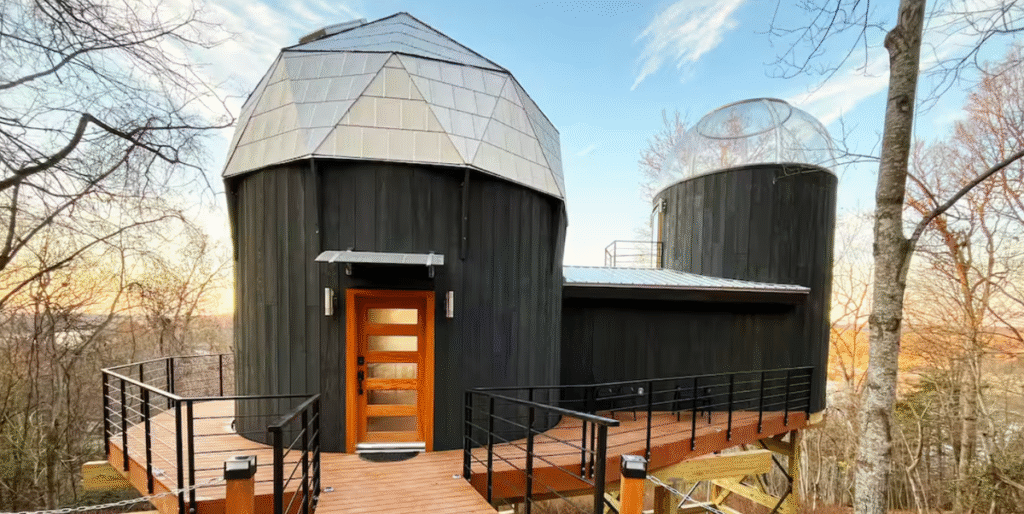If you’ve ever looked at photos of emerald cliffs, puffins, and turf-roofed cottages and thought, “Where is that?”, there’s a good chance you were staring at the Faroe Islands. Tucked in the North Atlantic between Iceland and Norway, this tiny archipelago feels like Europe’s last wild frontier — but it’s suddenly getting much easier to reach.
We at Travel Off Path have already shared how the Faroes are like Iceland with no crowds and storybook villages to spare, and they’ve quickly become one of our favorite “how does this even exist?” destinations. Now, new flights, tunnels, hotels, and wellness spots mean you don’t have to be a hardcore adventurer to explore its far-flung corners.
Below, we’ll break down why the Faroe Islands are still incredibly untouched and why 2025–26 is the perfect window to go before everyone else catches on.
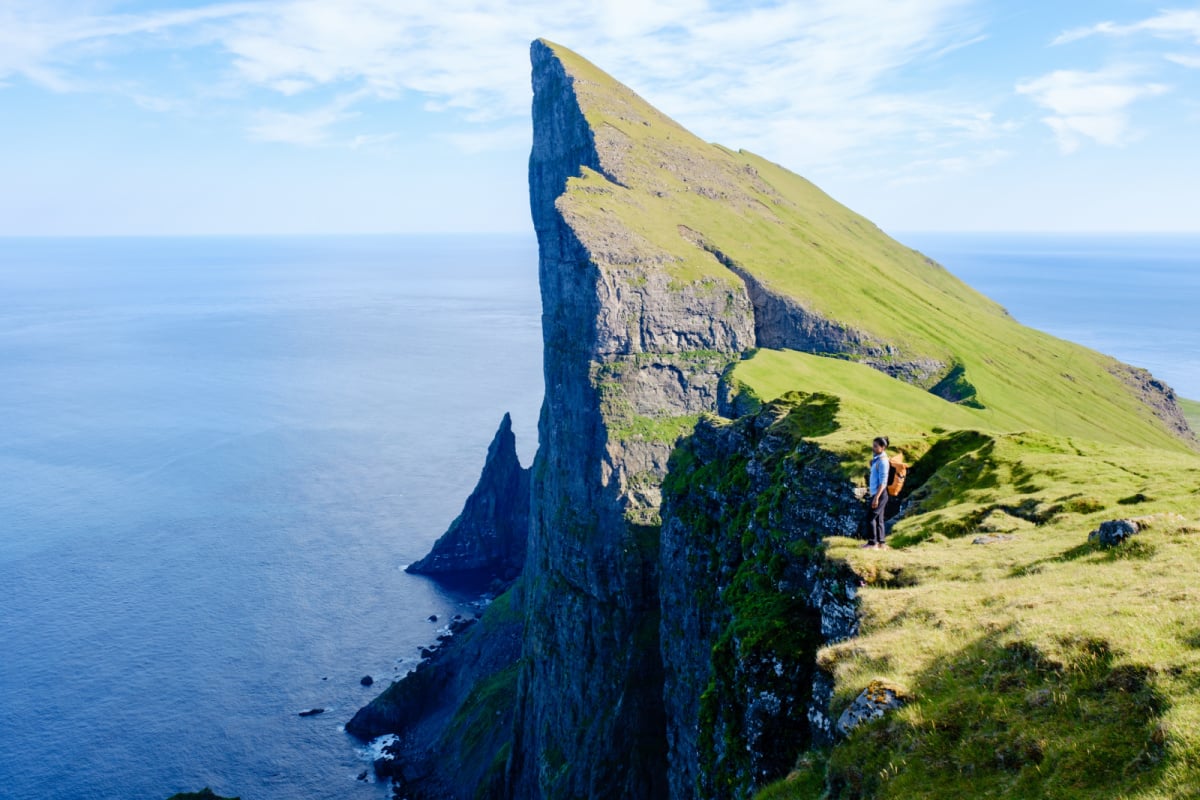

Where Are The Faroe Islands And Why Are They Still So Quiet?
The Faroe Islands are an 18-island volcanic archipelago in the North Atlantic, roughly halfway between Iceland and Norway and just north of Scotland.
About 54,000 people live here, along with more than 70,000 sheep — and only around 100,000 tourists show up in a typical year, a tiny fraction of neighboring Iceland’s visitor numbers. That means you can still find yourself hiking alone along sea cliffs, watching puffins on Mykines, or wandering turf-roofed villages like Gjógv and Saksun without the shoulder-to-shoulder crowds you’d expect at a place this photogenic.
Conde Nast Traveler even named the Faroe Islands one of the best places to go in 2025, highlighting how the country is investing in new ways to reach its remotest corners without sacrificing that wild, empty feel.


Getting There Just Got Way Easier
For a long time, “How do I even get to the Faroes?” was the number-one question. That’s changing fast.
From North America and Europe via Iceland
Icelandair now sells regular itineraries to Vágar Airport (FAE), the Faroes’ only airport, routed through Reykjavík. From the U.S. and Canada, you can connect through Iceland and continue on to the islands on a single ticket, often with the option to build in an Iceland stopover on the way.
If you love the idea of soaking in hot springs and chasing waterfalls in Iceland before heading deeper into the North Atlantic, you can pair the Faroes with an Iceland stopover and follow our own 48-hour stopover in the safest country on earth.


Direct flights from Europe
The Faroes’ home carrier, Atlantic Airways, has built a surprisingly robust route network.
You can now fly nonstop to Vágar from several Danish cities (including Copenhagen and Billund) plus hubs like Paris, Edinburgh, and other seasonal European gateways, with additional options from airlines such as SAS and Widerøe.
Bottom line: you no longer have to string together obscure connections. From most major U.S. cities, it’s one connection through Iceland or Denmark, and from Europe, often a simple 2–3-hour nonstop.
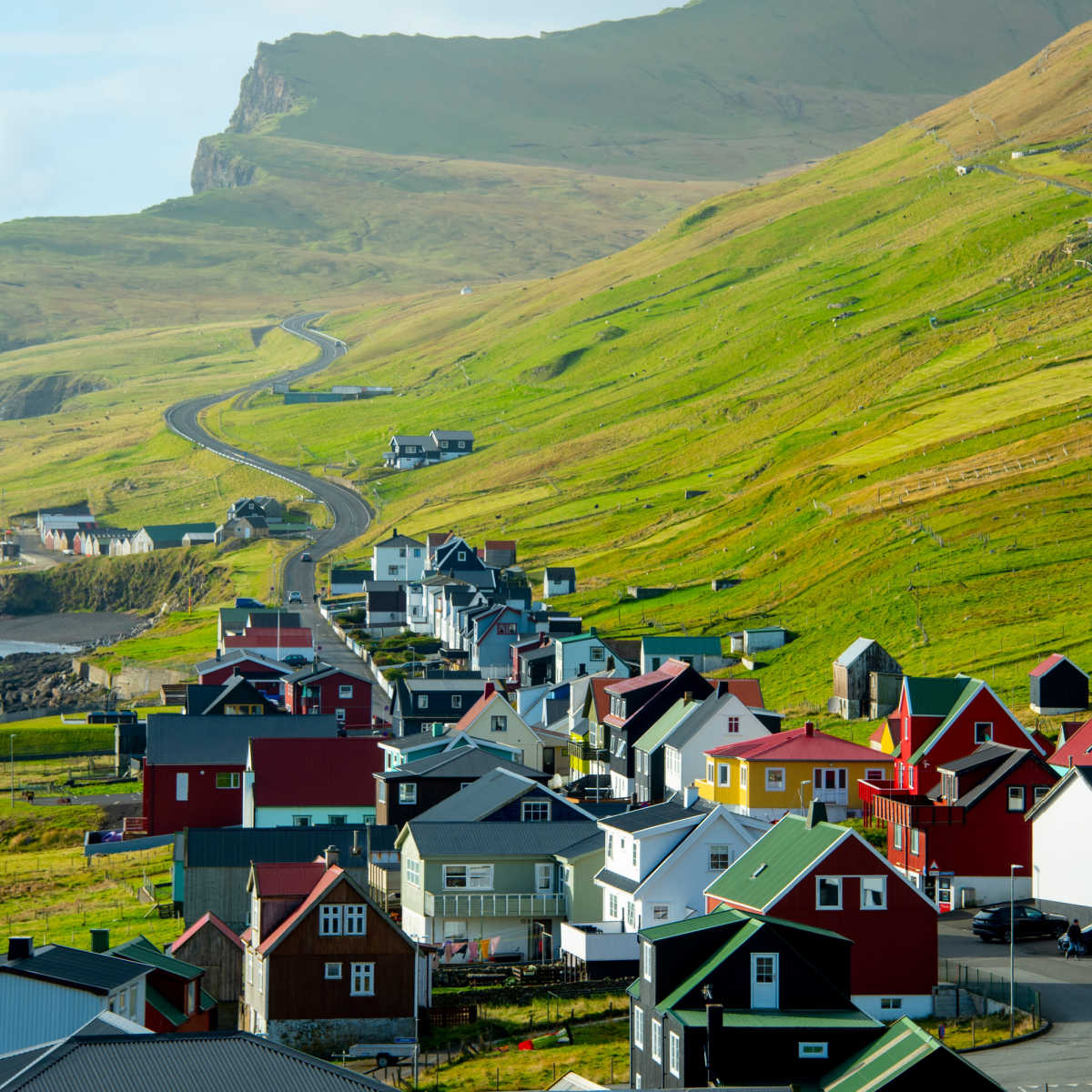
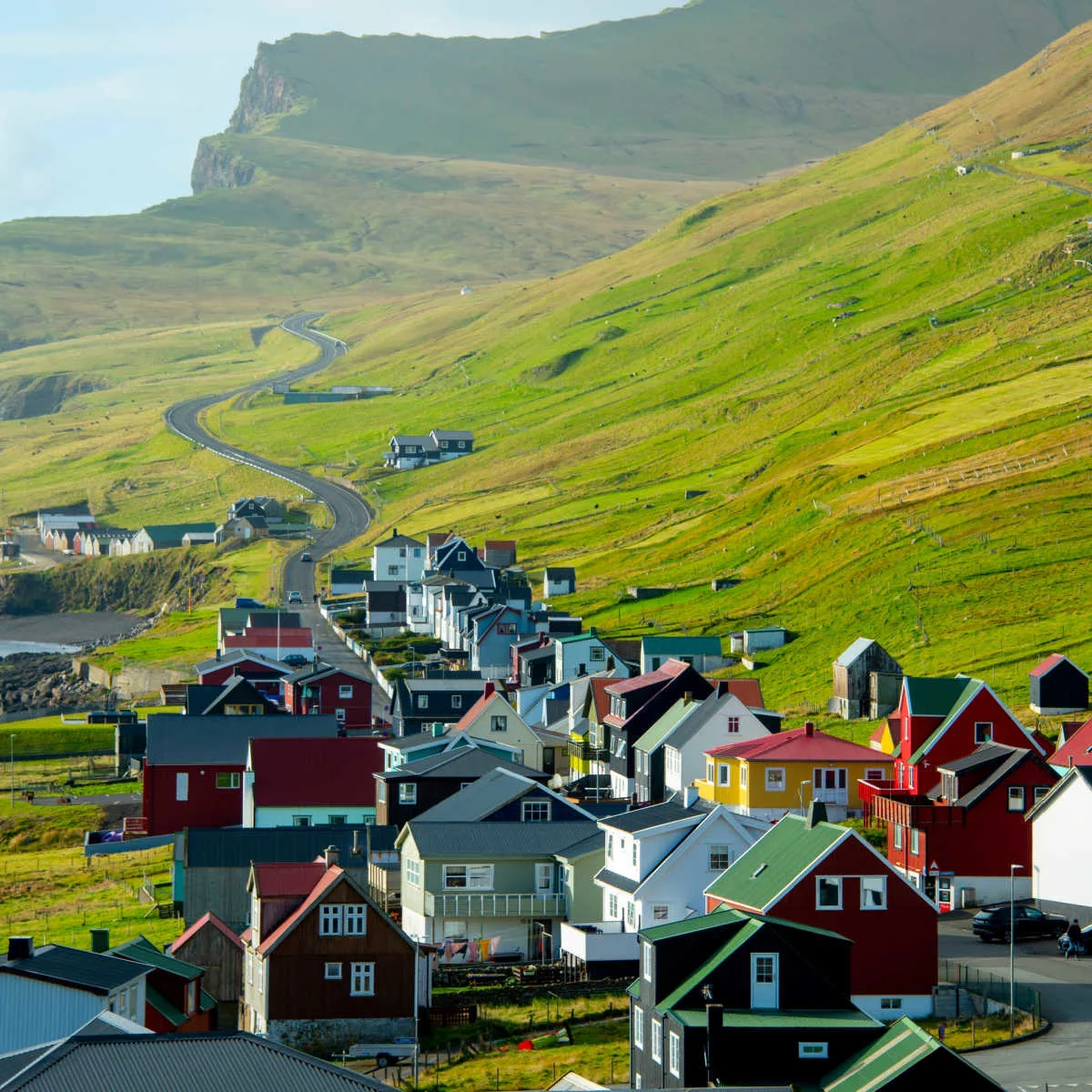
A New Tunnel Is Opening Up The “Hidden” Islands
Once you land, the real magic is how easy it’s become to reach what used to be the most remote corners.
The Faroes already had an impressive network of bridges and subsea tunnels, including the famous Eysturoy tunnel with its underwater roundabout. In late 2023, a brand-new undersea link — the Sandoyartunnilin, or Sandoy Tunnel — opened to the public, finally connecting the main island to Sandoy by road.
Instead of juggling ferry schedules, you can now just drive from Tórshavn to Sandoy through a 6-plus-mile tunnel decorated with moody, Viking-inspired art by Faroese artist Edward Fuglø, complete with a custom light show. There’s a toll (roughly the equivalent of €20–25 each way for cars, typically billed automatically through your rental company), but in exchange, you’re getting year-round, storm-proof access to windswept beaches and tiny villages that used to feel off-limits unless you had perfect timing.
For travelers, this is huge: it means you can base yourself in or around the capital, rent a car, and comfortably day-trip to islands that once required serious logistics.

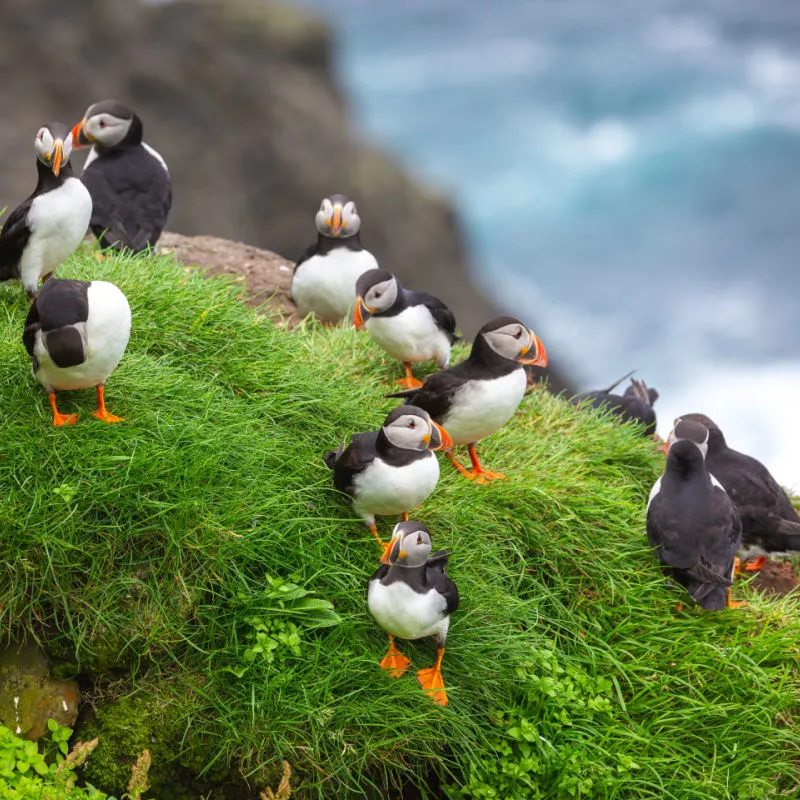
New Hotels And Spas For A Cozy Nordic Base
Despite being remote, the Faroes are quietly leveling up their hotel game:
Right at the airport:
Refreshed Hotel Vágar sits just a five-minute walk from the terminal with easy access to Múlafossur waterfall, Trælanípa (“lake over the ocean”), Drangarnir sea arch, and Mykines ferries.
In Tórshavn:
The Hilton Garden Inn Faroe Islands brings familiar comfort (and a great breakfast buffet) plus big views over the capital, just a short walk or drive from downtown.
For something more local-feeling, Hotel Føroyar is built into the hillside with turf roofs and sweeping views over Tórshavn — and it’s now home to Ress Spa, a sleek Nordic wellness space with saunas, heated pools, and floor-to-ceiling views of the fjords.


Up north in Klaksvík:
A brand-new four-star property, Hotel Bisk, is slated to open as the first major upscale hotel outside the capital, right on the water in Klaksvík. It’s designed with 81 rooms, a restaurant, and event space — perfect for exploring the northern islands and the iconic Kallur Lighthouse hike.
If you’re more into cold-plunge culture, Havdypp on Leynar Beach offers a small, private seaside spa with sauna and cold bath overlooking the surf — a perfect way to thaw out after a cliff hike.
How Many Days Do You Need & What Can You Actually See?
Thanks to the tunnels and compact size (you can drive across the main islands in a couple of hours), you can see a lot in 4–5 days:
- Day 1: Land on Vágar, drop bags at Hotel Vágar or in Tórshavn, then head straight for Múlafossur and the “lake above the ocean” hike at Trælanípa.
- Day 2: Explore Tórshavn’s old town (Tinganes), the cathedral, and nearby Kirkjubøur, home to medieval ruins and farmhouses.
- Day 3: Drive through the Sandoy Tunnel for beaches, bird cliffs, and quiet villages without worrying about missing the ferry.
- Day 4–5: Weather permitting, add a boat trip to the Vestmanna sea cliffs or Drangarnir, and if you’re visiting in summer, a day on Mykines for puffin watching.
If you want to go slower, a week gives you room for Kalsoy, Suðuroy, and a full spa day.


Practical Tips Before You Book
A few quick things that will make your Faroe trip smoother:
- Best time to go: Late May through early September brings longer days and active birdlife (puffins are generally around from May to late August). Winter is moody and beautiful but very short on daylight and more weather-dependent.
- Budget reality check: Like other Nordic destinations, the Faroes are on the pricey side. Mid-range hotels often start around the low-hundreds per night, and eating out adds up — but self-catering and supermarket runs help a lot.
- Driving: Renting a car is the easiest way to explore; roads are good, traffic is light, and tunnels make island-hopping straightforward. Just watch for sheep on the road and remember that some subsea tunnels charge tolls automatically to your rental.
- Border rules: The Faroes aren’t in the EU or Schengen, but most visitors will transit through Schengen hubs like Copenhagen or Reykjavík. Europe is rolling out new fingerprinting and exit/entry systems, so make sure you’re up to speed on what that looks like at the airport — our guide to Europe’s mandatory fingerprinting breaks it down in plain English.
And before you lock anything in, we highly recommend running your plans through our new 1-Minute Trip Check, which pulls together entry rules, hidden fees, and advisories in one place so you don’t get surprised at check-in.
The Faroe Islands are still one of Europe’s most untouched, surreal island escapes — but with new flights, tunnels, hotels, and spas, they’re no longer just for the hardcore. If you’ve been waiting for a sign that it’s finally time to go, this is it.
The Travel Off Path Advantage: Your Travel Toolkit
Subscribe To Our Latest Posts
Enter your email address to subscribe to Travel Off Path’s latest breaking travel news, straight to your inbox.


